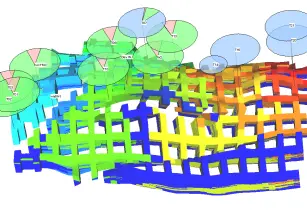Emerson has launched Roxar Tempest™ 8.2, the latest version of its reservoir management software, to bring advanced uncertainty analysis tools and increased support to the Big Loop™ workflow and robust risk analysis across the seismic to simulation workflow
The announcement aims to strengthen Emerson’s end to end exploration and production (E&P) software portfolio, helping operators achieve top-quartile performance and greater project certainty on investment and operational goals within new and established reservoirs.
Enhancements to the Big Loop workflow within Tempest ENABLE, Emerson’s uncertainty management and history matching module, centre on greater connectivity to other IT ecosystems leading to the closer integration of geology and engineering, simpler workflow setup and improved risk and uncertainty analysis.
Tempest MORE 8.2, the reservoir simulator, aims to handle gas liquid recovery plants, enabling the calculating of liquid petroleum gas (LPG) and natural gas liquids (NGLs) production. In addition, the modelling of the physical processes for near well bore flow and for multiple simultaneous fluid types are enhanced.
“What sets Roxar Tempest apart is our commitment to go beyond traditional flow simulation and generate an automated workflow that expands upstream into geological modelling and downstream into production management and economics for a more consistent reservoir understanding and greater project certainty,” said Kjetil Fagervik, vice-president of product development of Roxar software at Emerson Automation Solutions.
“With Tempest 8.2, we are one step closer to achieving this - embedding our Big Loop workflow further into our reservoir management suite, expanding MORE’s capabilities, and providing the very best in risk mitigation, decision support, workflow integration and reserves estimations from geosciences right through to production,” Fagervik added.
“Reservoir uncertainties are captured and varied as input parameters, creating an ensemble of realistic reservoir models that all feed into the reservoir simulator. This leads to a better understanding of the reservoir geometry, more robust reserves estimations and better-informed decisions for future field development scenarios,” according to Emerson.




